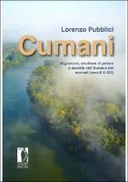Explore

This book is a synthesis of the great migrations of the 6th-13th centuries, focused on the median space between the two extremes of the Eurasian continent: Western Europe and Eastern Asia. In the light of the sources, it aims to reassess the complexity of the relationships between the nomads of the steppes and the sedentarized societies that came into contact with them. The choice to focus on the Qïpčaq-Cumans is due to their history, unique because they never constituted an organized and centralized center of collective power (stateless nomads); and paradigmatic, because it encompasses all the constitutive elements of steppe nomadism: social heterogeneity, mobility, military preparation, attraction for trade and willingness to negotiate. The migrations of the nomads of the steppes and their arrival close to the great organized communities of the Islamic and Christian world, from Asia to Europe, contributed to triggering a process of integration between Asia and the Mediterranean basin, a process that the Mongol invasion and conquest completed, giving birth to a new shared global space.
This book is included in DOAB.
Why read this book? Have your say.
You must be logged in to comment.
Rights Information
Are you the author or publisher of this work? If so, you can claim it as yours by registering as an Unglue.it rights holder.Downloads
This work has been downloaded 47 times via unglue.it ebook links.
- 47 - pdf (CC BY) at OAPEN Library.
Keywords
- Byzantine history
- Central Asian History
- Cumans
- eurasia
- History
- History of Islam
- History: earliest times to present day
- Humanities
- Kievan Rus’
- Medieval history
- Silk Road(s)
- Steppe Nomads
- thema EDItEUR::N History and Archaeology::NH History::NHB General and world history
Links
DOI: 10.36253/978-88-5518-313-0Editions

